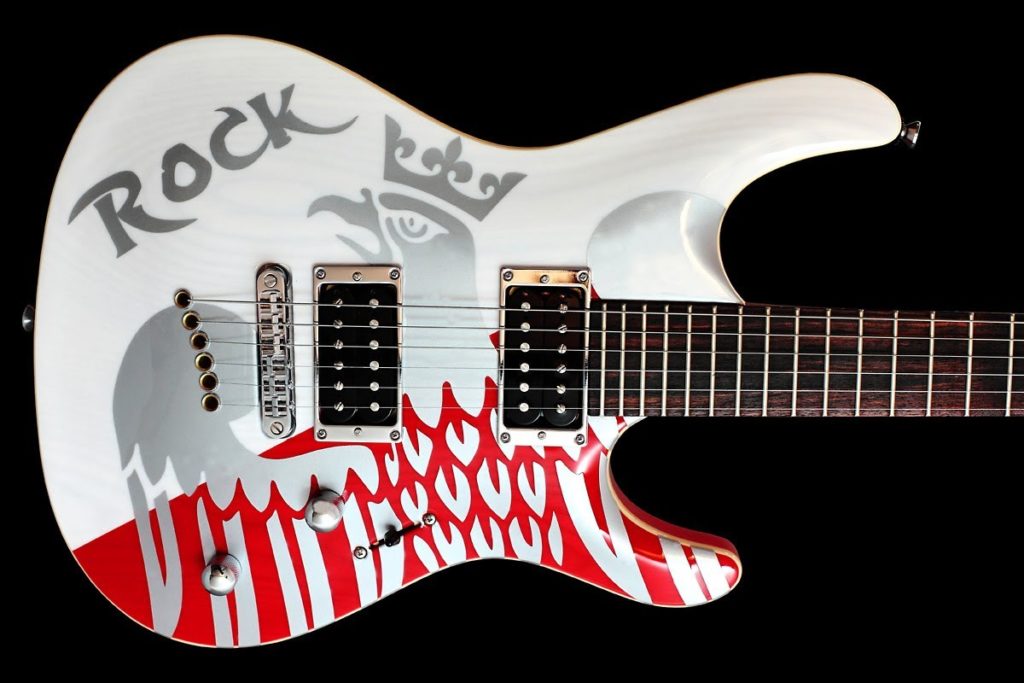http://insiderockmusic.com/destroy.html
Why did his followers, who originally were Christians when they arrived at his place, stay with David Koresh at his Waco compound—even after he separated husbands and wives—and then “remarried” these wives and teenage daughters? Shortly after the compound burned to the ground, a Branch Davidian surviving cult member who had not been inside explained why: “It was addicting! He controlled us with rock music!” Koresh entertained them for several hours each day with his hard rock band (New York Times News Service, in Chicago Tribune, April 20, 1993).
“Rock music can make it easy for you to go somewhere you want to go, but know you shouldn’t.”—Lawson, Rock is Here! p. 70.

Journalist Jack Kelley describes an Amy Grant “Christian Rock concert”:
“Inside the pavilion, 10,000 teens clap and stomp in anticipation. The band begins a fast-paced drum beat. And then, Grant emerges, dressed in a flashy leopard-print jacket and leg-hugging black tights. The screams are deafening.”—USA Weekend, November 8, 1985.
Describing her music, author Cliff Jahr writes:
“With her successful blend of gospel and rock, Amy’s Christian music could easily pass for secular. Its hard-driving arrangements, featuring guitar riffs, and her impassioned delivery sound exactly like today’s mainstream pop.”—Cliff Jahr, Ladies’ Home Journal, December 1985, p. 98.
Then he turns his attention to the thousands of young people from Christian homes who are there:
“She has attracted hundreds of thousands of well-scrubbed young fans . . who know every lyric by heart. Like rock fans everywhere, they clap, cheer, join hands, sway in their seats and boogie in the aisles.”—Ibid.
The youth of the churches are being destroyed, with the permission of pastors and youth leaders who imagine that something good is being accomplished.
“We’ve got to reach kids where they are right now. We’ve got to get in there with whatever is communicating musically.”—Amy Grant, USA Weekend, November 8-10, 1985.
The objective of such “Christian music” groups as Stryper is to pull Christian youth, as deeply as possible, into mind-paralyzing heavy rock.
“Stryper is trying to stay away from being known simply as a Christian band. We want to be known as ‘a metal band for Christ.’ We’re here to show people you can play rock music, you can look this way [in the grotesque costumes of the Strypers], and you can still let Jesus be the Lord of your life.”—Michael Sweet of Stryper, quoted in Christianity Today, February 1985.
Not only Christian rock—but all rock is gradually destroying the youth of the land—whether in the churches or out of them.
“Rock is an established pervasive social force and is still growing.”—John Rublowsky, Popular Music, p. 14.
“It’s arrogant, aggressive, slaps you right in the face. Rock is the first music ever addressed directly to the teenage world.”—Ira Peck, The New Sound, Yes, p. 19.
In the summer of 1993, 2,750 young people, between the ages of 12 to 26, from all 50 states and from Canada, France, Mexico, New Zealand, the Netherlands, and Russia were asked the question: “Do you believe rock music can be addictive?” —99.3% said “Yes!”
“Nothing is more singular about this generation than its addiction to music.”—Dr. Allan Bloom, in his book, The Closing of the American Mind.
Here is what some of the leading performers say:
The Beatles, in the late 1960s: “Our music is capable of causing emotional instability, disorganized behavior, and even revolution.”
Spencer Dryden: “Get them while they’re young. Bend their minds.”
Jan Berry: “The throbbing beat of rock provides a vital sexual release for its adolescent audience.”
Donnie Brewer of Grand Funk: “We take the kids away from their parents and their environment to where the only reality is: the rhythm and the beat.”
John Denver, though primarily a folk and country-western singer, said of rock: “Rock music is a greater influence over the souls of men than primitive Christianity.”
Andrew Oldham (recording manager of the Rolling Stones) wrote in a trade journal: ” ‘Once love without sex was the great theme of folk song; today’s music rhapsodizes sex without love . . Never before have pop singers been so explicit and so carnal’ . .
“Let’s spend the night together urges the [Rolling] Stones; and their manager (Andrew Oldham) cynically states, ‘Pop music is about sex and you have to hit them in the head with it.”—High Fidelity magazine, December 1968.
They make a lot of money destroying people’s morals, and seem to enjoy doing it. Rock concerts around the world began creating mass hysteria and violence. In Vancouver, during a 30-minute Beatles performance, 100 people were ‘stomped upon, gouged and assaulted.’
In Melbourne, nearly 1,000 were injured at a rock concert. Fire hoses were needed to disperse hysterical fans in Los Angeles.
A Rolling Stones concert, held in Southern California, drew more than 300,000, creating huge traffic jams. The Hell’s Angels were hired to ‘police’ the event, in which one person was killed and three others died of drug overdoses.
Young people gathered outside Cincinnati’s River¬¬front Coliseum. By 7:30 p.m., there were close to 7,000 waiting to get in. When the doors opened, a stampede occurred as everyone rushed to get the best seat. When the chaos ended, 11 people were dead, crushed under the feet of the uncontrollable crowd.
The total number of people attending these “rock festivals” ran into the millions. But when it became obvious that the events were nothing more than gigantic drug and sex orgies, they were outlawed in many places.
“Surprisingly, some of the worst carnage has occurred at some of the biggest shows,where one might expect concert-industry professionals to be more vigilant about safety.
“Reportedly, almost 10,000 people were injured at Woodstock 1999 in Rome, New York, where a near-riot broke out during a performance by the hard-rock group, Limp Bizkit. Three deaths and several rapes also occurred among the crowd of almost 200,000.
“[In May 2000] over 900 were injured at the 93XFest at Float-Rite Park in Somerset, Wisconsin. Artists, show announcers, and guest celebrities called upon women to disrobe; and their naked images were projected on large screens. Three women told police they were raped during the three-day festival . .
“[Speaking of the dangers of “mosh pits”] Cory Meredith, owner of Staff Pro security company in Orange County, California, lays much of the blame on the performers themselves. The rowdiness, he says, ‘could be stopped, but it seems like it is part of the show, so they let it continue.’ “—”The Rock ‘n’ Roll Horror Show: What Every Parent should Know,” Family Circle, November 1, 2001.
We need not be surprised at the results. Music which originated in brothels, bars, slums, and earlier still from pagan cultures in foreign lands—is the new heritage of Christian music!
Worldlings laugh at the way Christian young people—and even their youth leaders and pastors—excitedly accept whatever has a sprinkling of Christian words in it. The cry of church leaders is “Let’s be contemporary; let’s have new church music. The old hymns are boring. People won’t come to church if we play them!”
In an article, entitled “Problem of Religious Content,” the rock magazine, Rolling Stone, praised Bob Dylan’s latest album as one of his best. It then discussed the “problem” that, in order to break into the Christian churches, the music industry was having to use Christian words which few music writers and singers believed in.
Then the comment was made: “The words really don’t matter after all.” The secular music industry recognized that it would be the music itself which would capture the churches and its young people. A few Christian words, detested by the rock composers and singers, scattered here and there in the songs, would just help get more to enter the doors.
“The Counterculture springs more than anything else from rock ‘n’ roll music. The shattering, obliterating volume . . amounted to a new form of violence . . coupled with the anarchic, brute-sexual rhythm and lyrics of rock ‘n’ roll music. The counterculture is the world’s first socio-political movement to grow out of the force of electronically amplified music.”—Time magazine, February 22, 1971.
The rock magazine, Rolling Stone, agreed: “Rock is more than just music. It is the energy center of the new culture and youth revolution.”
Special note: In this book, I only hint at the extremely evil words of rock music, the things that are done on stage, and the things that are done with men and women fans and others after the performance is over.
The biographies of composers, musicians, and singers all read the same: total excess of sex, perversion, street drugs, alcohol, and violence interspersed with crime and suicides. Their devoted, possessed fans are led along the same road.
It appears that Satan brings all his rock worshipers along the same pathway to hell.
